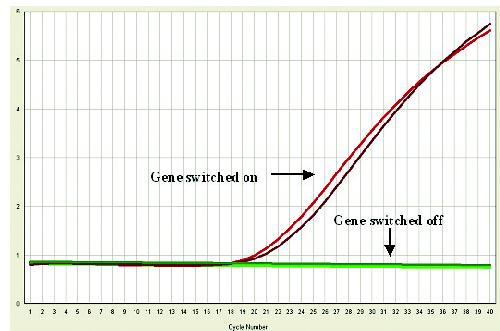Shortly after antibiotics were introduced to human medicine in the 1940s it was observed that chicks given feed supplemented with low concentrations of antibiotic, lower than what a doctor would prescribe for an infection, grew faster than normal. This led to extensive use of antibiotics as growth promoters (AGPs) in animals.
With the emergence of antibiotic resistance amongst bacteria, however, concern has grown over the decline in efficacy of these "wonder drugs". Because AGPs were used at sub-therapeutic levels it was feared animals could become a reservoir for antibiotic resistant bacteria thereby posing a threat to human health. The EU has therefore outlawed the use of AGPs.
How will the farming industry adapt to this change in poultry husbandry? One alternative is to exploit the properties of probiotic or 'friendly' bacteria, such as those found in the yoghurt drinks available in supermarkets. Probiotic bacteria are generally lactic acid bacteria (LAB) which have a long and safe history of use by humans � for thousands of years!
 Figure 1. Growing a Lactobacillus thermotolerans isolate from chicken crop in the presence of mucin led to an increased
floc height
We are investigating the use of probiotic bacteria as an alternative to AGPs. There is evidence to suggest that these bacteria can promote growth in animals by excluding pathogenic bacteria from the intestine. Once consumed, however, probiotic bacteria normally pass rapidly through the intestine. We are therefore studying the expression of genes associated with attachment of LAB to the intestinal wall of poultry. A simplified model where intestinal mucus is included in the culture media (Fig. 1) is being used for these studies. Following growth in the model system, RNA is isolated from the bacteria and assayed using Real-Time PCR (a quantitative form of the polymerase chain reaction). This determines the conditions under which gene expression is switched on (Fig. 2). If genes important in attachment can be identified, LAB with enhanced ability to persist in the gut can be developed.
Figure 1. Growing a Lactobacillus thermotolerans isolate from chicken crop in the presence of mucin led to an increased
floc height
We are investigating the use of probiotic bacteria as an alternative to AGPs. There is evidence to suggest that these bacteria can promote growth in animals by excluding pathogenic bacteria from the intestine. Once consumed, however, probiotic bacteria normally pass rapidly through the intestine. We are therefore studying the expression of genes associated with attachment of LAB to the intestinal wall of poultry. A simplified model where intestinal mucus is included in the culture media (Fig. 1) is being used for these studies. Following growth in the model system, RNA is isolated from the bacteria and assayed using Real-Time PCR (a quantitative form of the polymerase chain reaction). This determines the conditions under which gene expression is switched on (Fig. 2). If genes important in attachment can be identified, LAB with enhanced ability to persist in the gut can be developed.
 Figure 2. RNA assay by Real Time PCR
Figure 2. RNA assay by Real Time PCR
Contact: Dr Martin Collins, Department of Food Science
(Food Microbiology), Queen's University Belfast;
Tel: 028-90255314;
Fax 028-90255009;
E-mail:
[email protected]
|


